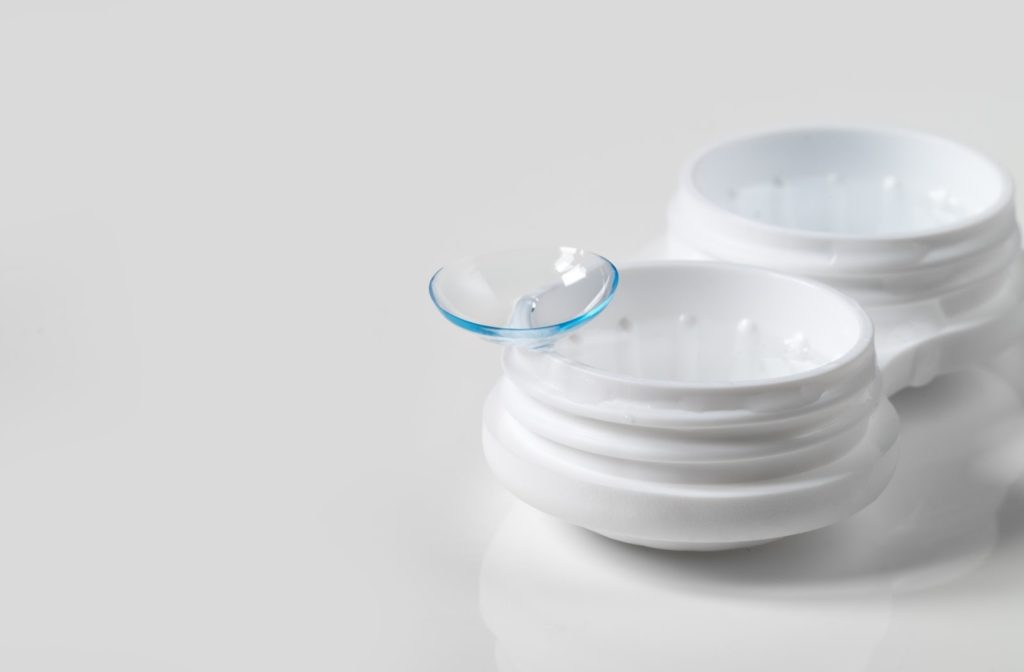Contact lenses are a great alternative to standard eyeglasses, but did you know there is an option for those who have multiple prescriptions? Your eye doctor may recommend multifocal lenses if you require multiple prescriptions and there are many varieties to choose from. To determine which multifocal lens may best suit your needs, it’s important to learn how they function.
How Do Multifocal Lenses Work?
These lenses are particularly helpful for people affected by presbyopia. This condition naturally occurs over time, as the lens within the eye can lose flexibility. Those experiencing presbyopia with nearsighted eyes may still see well up-close once eyeglasses are removed. With your glasses removed, your distance vision will become blurred. This means patients dealing with presbyopia may need to constantly switch between wearing and not wearing their glasses.
Eyeglasses with multifocal lenses solve the problem of needing multiple pairs. They combine multiple prescriptions into a single lens, allowing its wearers to switch between prescriptions effortlessly.
Multifocal lenses aren’t limited to eyeglasses. They can be integrated into your contact lenses and are available in different materials and designs to suit your needs. The most commonly used designs are simultaneous vision, segmented, and monovision, and each works differently to provide clear vision.
Simultaneous Vision Designs
Simultaneous vision designs designate different areas of the lens for different prescriptions. The wearer simply needs to determine which part of their contact lens provides the clearest view of what they’re currently looking at, and focus their eye on the specific section. There are two variants of this design, concentric multifocal and aspheric multifocal contact lenses.
Concentric Multifocal Contact Lenses
Concentric multifocal lenses have a window of the wearer’s primary (near or far distance) prescription within their centre, and the rest of the lens is surrounded by rings of different prescriptions suited for the opposite distance. Typically, the centre ring is designated for distance viewing. These rings work as the wearer shifts their focus to whichever zone provides them with the clearest vision in a given moment.
Aspheric Multifocal Contact Lenses
Aspheric multifocal lenses are like progressive lenses for contact-wearers. They utilize a process similar to concentric multifocal lenses but provide more gradual transitions. The rings surrounding the centre of the lens are discrete and allow for an easy switch between different prescriptions.
The design of your multifocal contact lenses can be tailored to your preference. The prescriptions themselves are not the only customized portion of the lens because the alignment of the different zones and the lenses themselves can be catered to each individual.
Segmented Designs
Segmented designs perform similarly to bifocal lenses. The lens has two prescriptions separated by a distinct line. The wearer can look through the part of the lens they need for clear vision at any distance.
This type of lens is rigid, so your contacts do not move around on your eye. This ensures the lower section of your prescription, used for near-correction, stays in place when you shift your vision downward.
Monovision Designs
Monovision designs utilize how your dominant and non-dominant eye function together. When looking into the distance, we use the dominant eye for focusing. Monovision lenses work by allowing the wearer to use the dominant eye for distance vision and the non-dominant eye for near vision.
There are many varieties of monovision design lenses including:
- Computer monovision
- Modified monovision
Simultaneous vision, segmented design, and monovision contact lenses all have their benefits, but how do you know which option might be best suited for your eyes?

Are Multifocal Contact Lenses Right for You?
If you’re someone who gets frustrated with their eyeglasses, contact lenses can be a great alternative; they can provide a more natural feel and there aren’t any frames to block your vision. Multifocal lenses can be helpful whether they’re in contact lenses or frames.
If you prefer to be frame-free, even if it is just occasionally, multifocal contacts may be the right choice for you. With a little bit of care, your contact lenses can provide you with clear vision at any distance. The next question you may have is which lenses you should use?
What Multifocal Contact Lens Should I Use?
If you’re interested in multifocal contact lenses, your optometrist can recommend the best fit for you. They will perform a thorough exam to determine your prescriptions and the exact shape of your eye.
Finding the Best Lenses for You
Before you contact your optometrist, think about what you want your contact lenses to provide. When in your day, or for what specific activities, would you like to be spectacle free?
After a consultation, your optometrist can recommend the best multifocal lenses for your specific needs. There are many options for lenses but the fit needs to be right. Contact your optometrist to find the best solution for your needs.



